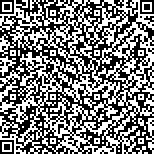林阳阳,徐洋凡,冯慧婷,等.功能性电刺激对血管性痴呆大鼠认知功能和海马区脑源性神经营养因子-突触素-微管相关蛋白2通路的影响[J].中华物理医学与康复杂志,2020,42(8):679-684
扫码阅读全文

|
| 功能性电刺激对血管性痴呆大鼠认知功能和海马区脑源性神经营养因子-突触素-微管相关蛋白2通路的影响 |
|
| |
| DOI:10.3760/cma.j.issn.0254-1424.2020.08.002 |
| 中文关键词: 功能性电刺激 血管性痴呆 脑源性神经营养因子 突触素 微管相关蛋白2 |
| 英文关键词: Functional electrical stimulation Vascular dementia Brain-derived neurotrophic factors Synaptophysin Microtubule associated protein-2 |
| 基金项目:国家自然科学基金青年基金资助项目(81601981);国家自然科学基金青年基金资助项目(81902284) |
|
| 摘要点击次数: 5883 |
| 全文下载次数: 5891 |
| 中文摘要: |
| 目的 本研究旨在探讨功能性电刺激是否改善大鼠学习记忆功能及是否增加海马区脑源性神经营养因子(BDNF)-突触素(SYN)-微管相关蛋白2(MAP2)通路相关蛋白的表达。 方法 选用清洁级成年雄性Wistar大鼠90只,按随机数字法分为假手术组、安慰刺激组和电刺激组,每组大鼠30只。安慰刺激组和电刺激组应用双侧颈总动脉夹闭法制作全脑缺血模型。3组大鼠根据治疗时间的不同再分为治疗3、7、14 d 3个亚组,每组10只大鼠。于造模成功后第7天开始,电刺激组给予功能性电刺激,假手术组和安慰刺激组给予假刺激,每日1次,每次30 min。功能性电刺激3、7和14 d后,应用Morris水迷宫评估大鼠学习记忆功能。3组大鼠处死后,应用原位杂交法检测BDNF mRNA的表达,免疫组化法检测SYN和MAP2蛋白的表达。 结果 功能性电刺激14 d后,定位导航测试的第3、4、5天,安慰刺激组的逃逸潜伏期显著长于假手术组和电刺激组(P<0.05);第6天的空间探索测试结果显示,安慰刺激组的原平台象限停留时间短于假手术组和电刺激组(P<0.05)。治疗3 d后,安慰刺激组海马CA1区BDNF mRNA的含量与假手术组比较,显著降低(P<0.05);治疗7 d后,安慰刺激组海马CA1区BDNF mRNA的含量与假手术组和电刺激组比较,显著降低,差异亦有统计学意义(P<0.05);治疗14 d后,安慰刺激组海马CA1区BDNF mRNA的含量与假手术组比较,显著降低(P<0.05)。治疗7、14 d后,安慰刺激组的MAP2蛋白表达显著低于假手术组和电刺激组(P<0.05)。治疗7 d后,安慰刺激组的SYN蛋白含量显著低于假手术组(P<0.05);治疗14 d后,安慰刺激组的SYN蛋白含量显著低于电刺激组和假手术组(P<0.05)。 结论 功能性电刺激治疗可上调BDNF-SYN-MAP2通路中的相关蛋白的表达,可能是其促进血管性痴呆大鼠学习记忆认知功能恢复的原因。 |
| 英文摘要: |
| Objective To explore the effect of functional electrical stimulation on cognition and on the expression of the brain-derived neurotrophic factor (BDNF), synaptophysin (SYN) and microtubule-associated protein 2 (MAP2) using a rat model of vascular dementia. Methods Ninety pathogen-free male Wistar rats were randomly divided into a sham operation group, a placebo stimulation group and an electrical stimulation group. Both the placebo and electrical stimulation groups underwent bilateral occlusion of the common carotid artery to establish a model of vascular dementia. In the sham operation group the arteries were exposed without occlusion. Each group was then sub-divided into 3, 7 and 14 days subgroups with 10 rats in each subgroup. Beginning seven days after the surgery, the rats in the electrical stimulation group were given 30-minutes of stimulation every day while those in the sham operation group and the placebo stimulation group were given false electrical stimulation. After 3, 7 or 14 days the rats′ cognitive functioning was quantified using the Morris water maze test. The rats were then sacrificed and the expression of BDNF mRNA was measured using in situ hybridization. MAP2 and SYN levels were quantified immunohistochemically. Results After 14 days the average latency in the placebo stimulation group was significantly longer than in the other groups. On the sixth day the average time in the target zone among the placebo stimulation group was significantly shorter than the other two groups′ averages. After only 3 days of simulation, the average expression of BDNF mRNA in the CA1 area of the hippocampus was significantly lower in the placebo stimulation group than among the others. After 7 days of stimulation the placebo group′s average was significantly lower than that of the sham operation group. The average expression of MAP2 had decreased significantly in the placebo stimulation group compared with the other two groups after 7 and 14 days of simulation. After 7 days the average expression of SYN in the placebo stimulation group was significantly lower than in the sham operation group, and after 14 days it was significantly lower than in the other two groups. Conclusions Functional electrical stimulation may improve learning and memory in rats modelling vascular dementia through increasing BDNF, SYN and MAP2 expression levels. |
|
查看全文
查看/发表评论 下载PDF阅读器 |
| 关闭 |